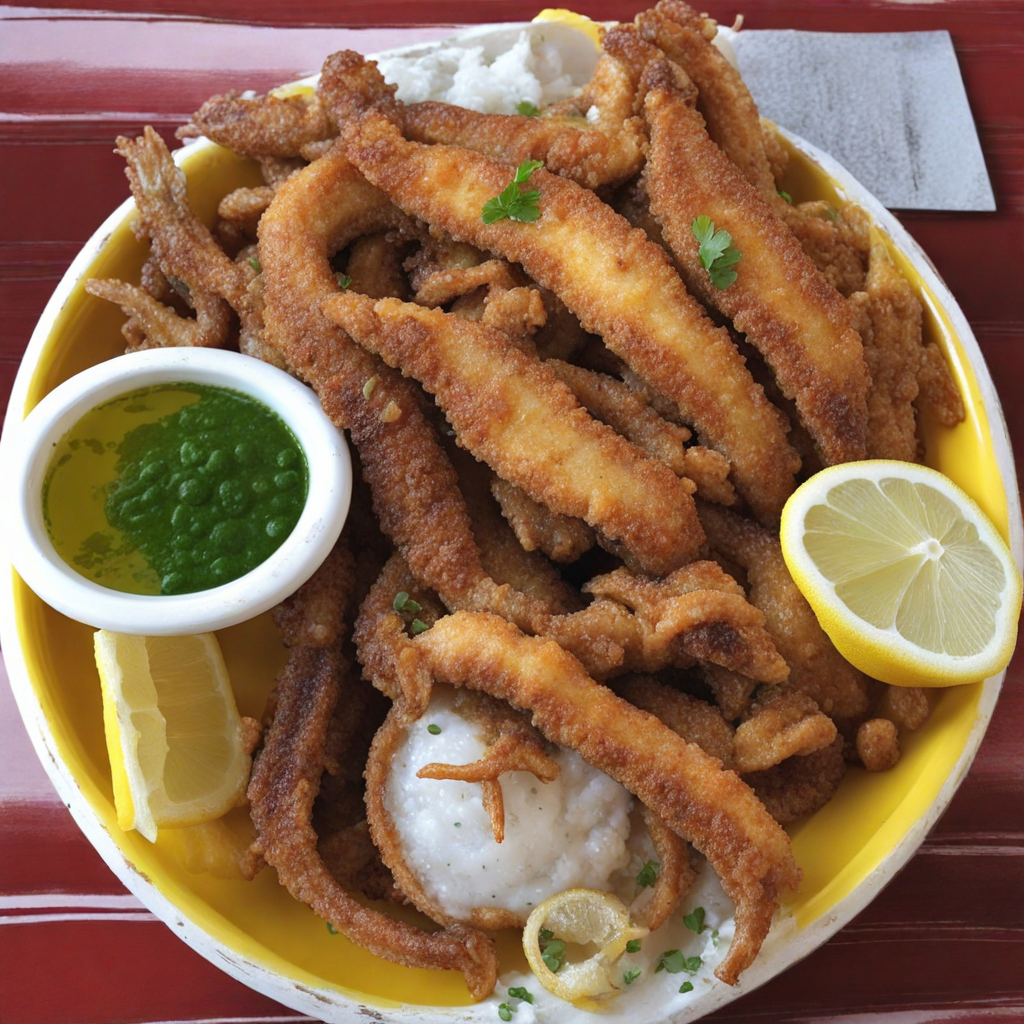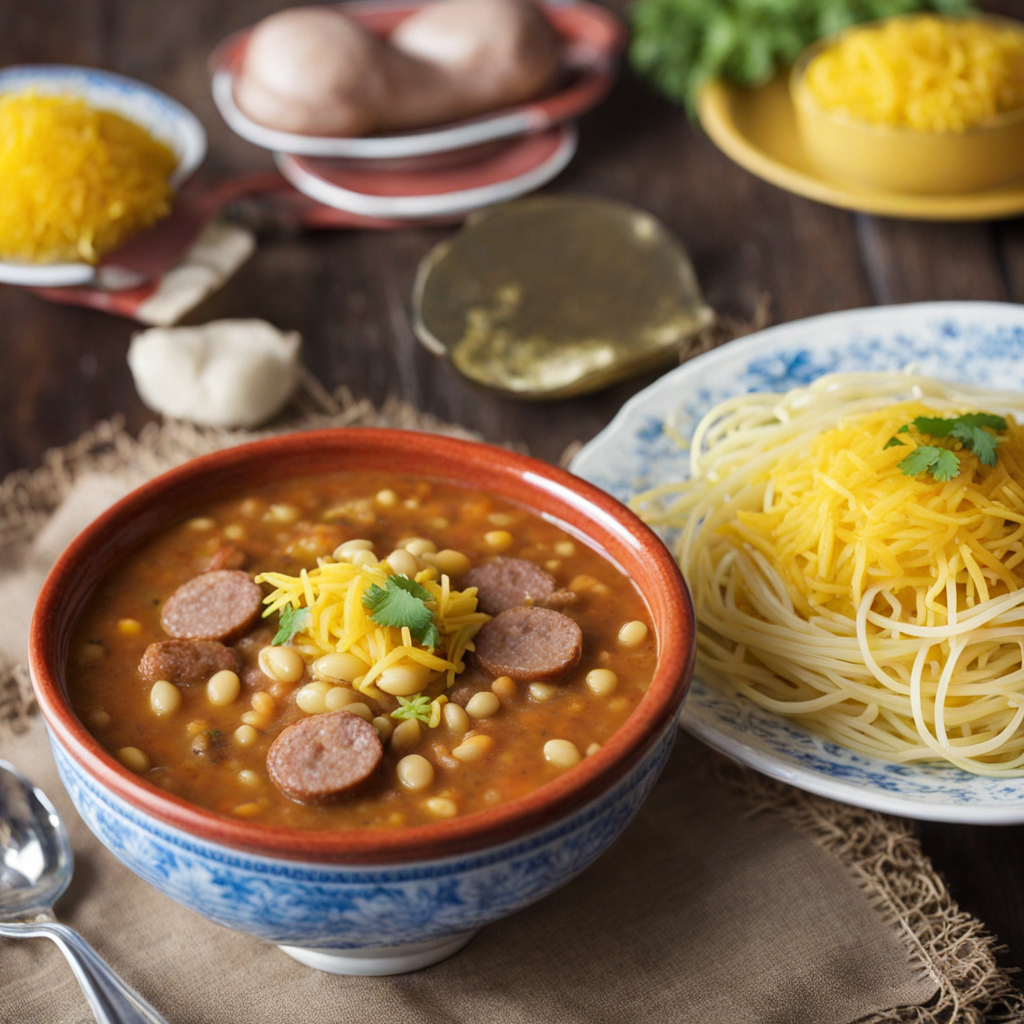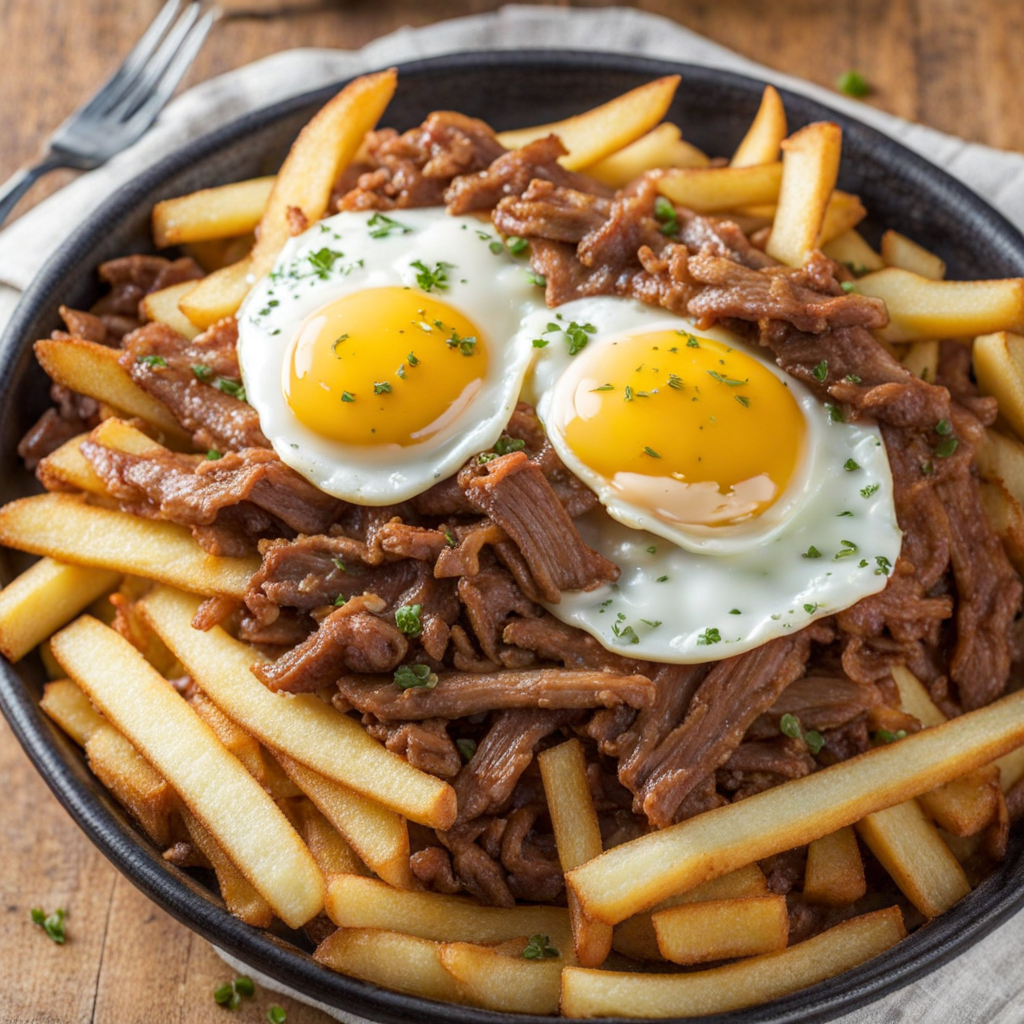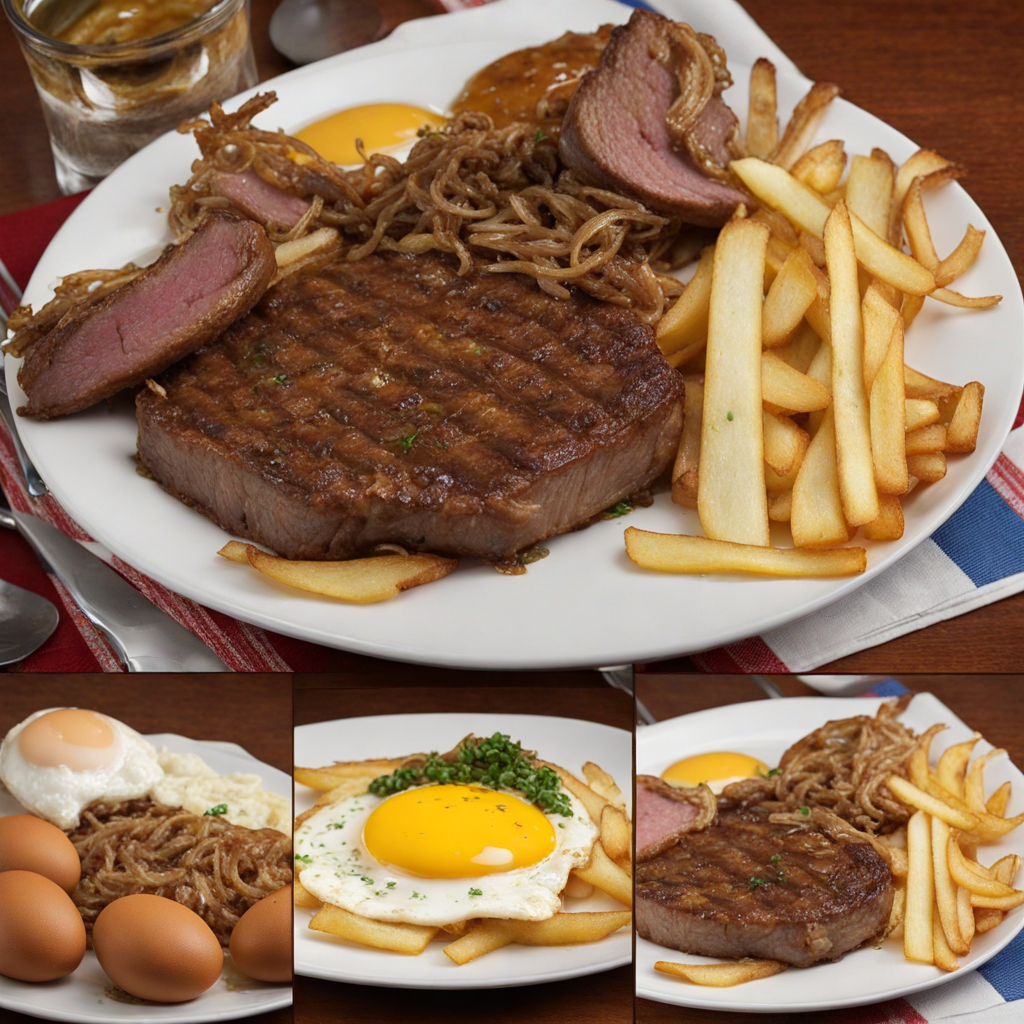Congrio Frito
Congrio Frito is a delightful Chilean dish that features the prized Congrio fish, known for its firm yet tender flesh and delicate flavor. This fish, often likened to the taste of cod, is typically coated in a light batter and then fried to golden perfection. The frying process enhances the natural flavors of the fish while adding a satisfying crispiness to the exterior, creating a mouthwatering contrast with the moist interior. The dish is usually seasoned simply with salt and pepper, allowing the quality of the Congrio to shine through, while sometimes being accompanied by a squeeze of fresh lemon juice for a zesty kick. Served hot, Congrio Frito is often presented alongside traditional Chilean sides such as pebre, a fresh salsa made from tomatoes, onions, cilantro, and chili peppers, which adds a refreshing element to the meal. Another common accompaniment is a side of mashed potatoes or a light salad, which complements the richness of the fried fish. The dish is popular in coastal regions of Chile, where the fish is sourced fresh, making it a staple in local eateries and homes alike. Congrio Frito is not just a meal; it's an experience that encapsulates the vibrant coastal culture of Chile. It's a dish that invites conviviality, often enjoyed during family gatherings or seaside picnics. The combination of the crunchy batter and the tender fish provides a satisfying mouthfeel, while the simplicity of the dish allows for a focus on the natural flavors of the ocean. For those looking to explore new culinary horizons, Congrio Frito offers a taste of Chile that is both authentic and unforgettable.
How It Became This Dish
The History of Congrio Frito: A Culinary Treasure from Chile Origins of Congrio Frito Congrio frito, or fried conger eel, is a beloved dish in Chilean cuisine, deeply rooted in the nation's maritime culture. The word "congrio" refers to a type of eel that is commonly found in the cold waters of the Pacific Ocean off the Chilean coast. The Chilean conger eel (Conger oceanicus) is known for its firm, white flesh and mild flavor, making it an ideal candidate for frying. The dish is typically prepared by coating the fish in a light batter or seasoned flour before frying it to a golden crisp, often served with a side of pebre (a fresh salsa made with tomatoes, onions, cilantro, and chili) and sometimes accompanied by potatoes or rice. The origins of fried conger eel can be traced back to the indigenous Mapuche people, who have inhabited the central and southern regions of Chile for centuries. The Mapuche relied heavily on the ocean and rivers for sustenance, incorporating fish and seafood into their diets. While the specific preparation of fried conger may not have been present in pre-Columbian times, the practice of cooking fish in various forms was already well established. As European colonizers arrived in the 16th century, they brought with them new cooking techniques and a variety of ingredients that influenced local cuisine. The Spanish introduced frying as a common cooking method, which would eventually blend with indigenous techniques. This fusion of cultures laid the groundwork for the development of Chilean gastronomy, particularly in coastal regions where seafood was abundant. Cultural Significance Congrio frito is not just a dish; it represents a crucial aspect of Chilean identity and heritage. Seafood has always played an important role in Chilean culture, particularly along the long coastline where fishing communities thrive. The dish embodies the connection between the people and the sea, highlighting the importance of fishing as a source of livelihood and sustenance for many coastal families. Moreover, fried conger eel has become a symbol of Chilean hospitality, often featured in family gatherings and celebrations. The preparation of the dish is often a communal activity, bringing families and friends together to enjoy a shared meal. It is common to find it served in traditional restaurants, known as "fondas," particularly during national holidays like Fiestas Patrias in September, when Chileans celebrate their independence. Congrio frito also has a place in the folklore and culinary narratives of Chile. It is often associated with coastal towns, particularly in the regions of Valparaíso and Concepción, where fishing is a way of life. Local legends and stories about fishing expeditions and the bounty of the sea contribute to the dish's allure, making it a cherished part of Chilean culinary history. Development Over Time As Chilean society evolved, so too did the preparation and presentation of conger eel. In the early 20th century, the dish began to gain popularity beyond local communities. With the rise of tourism and the appreciation for regional cuisines, fried conger eel became more widely recognized, appearing on restaurant menus and in cookbooks. The dish was often served in a simple yet appealing manner, showcasing the freshness of the fish and the skill of the cook. In the mid-20th century, as Chile experienced significant social and economic changes, traditional dishes like congri frito began to adapt to new culinary trends. Influenced by global cuisine and the burgeoning fusion food movement, chefs started experimenting with new flavors and presentations. While the classic fried version remained popular, creative twists emerged, incorporating spices, marinades, and innovative side dishes. The late 20th and early 21st centuries saw a resurgence of interest in traditional Chilean cuisine, fueled by a growing appreciation for local ingredients and sustainable practices. As more chefs began to focus on authentic, regional dishes, congri frito enjoyed renewed popularity, often served in upscale restaurants alongside contemporary interpretations of traditional Chilean fare. Today, Congrio frito is celebrated in various culinary festivals across Chile, where chefs showcase their unique takes on the dish. The rise of social media and food blogging has further propelled the popularity of Congrio frito, leading to an increase in interest from food enthusiasts and travelers looking to experience authentic Chilean cuisine. Moreover, as sustainability and environmental awareness become paramount in gastronomy, there is a growing emphasis on responsible fishing practices in Chile. Many chefs and restaurants are committed to sourcing their ingredients from local fishermen who adhere to sustainable practices, ensuring that the tradition of fried conger eel can be enjoyed by future generations without compromising marine ecosystems. Conclusion Congrio frito is more than just a delicious dish; it is a reflection of Chile's rich cultural heritage, the close relationship between its people and the sea, and a testament to the evolution of traditional cuisine. From its indigenous roots to its status as a beloved staple of Chilean gastronomy, this dish embodies the essence of Chile's culinary identity. As Chileans continue to celebrate and innovate around their food traditions, fried conger eel remains a symbol of their past, present, and future—a culinary treasure that encapsulates the spirit of a nation. Whether enjoyed at a family gathering, a seaside restaurant, or a modern eatery, congri frito stands as a delicious reminder of Chile's vibrant culture and history.
You may like
Discover local flavors from Chile







